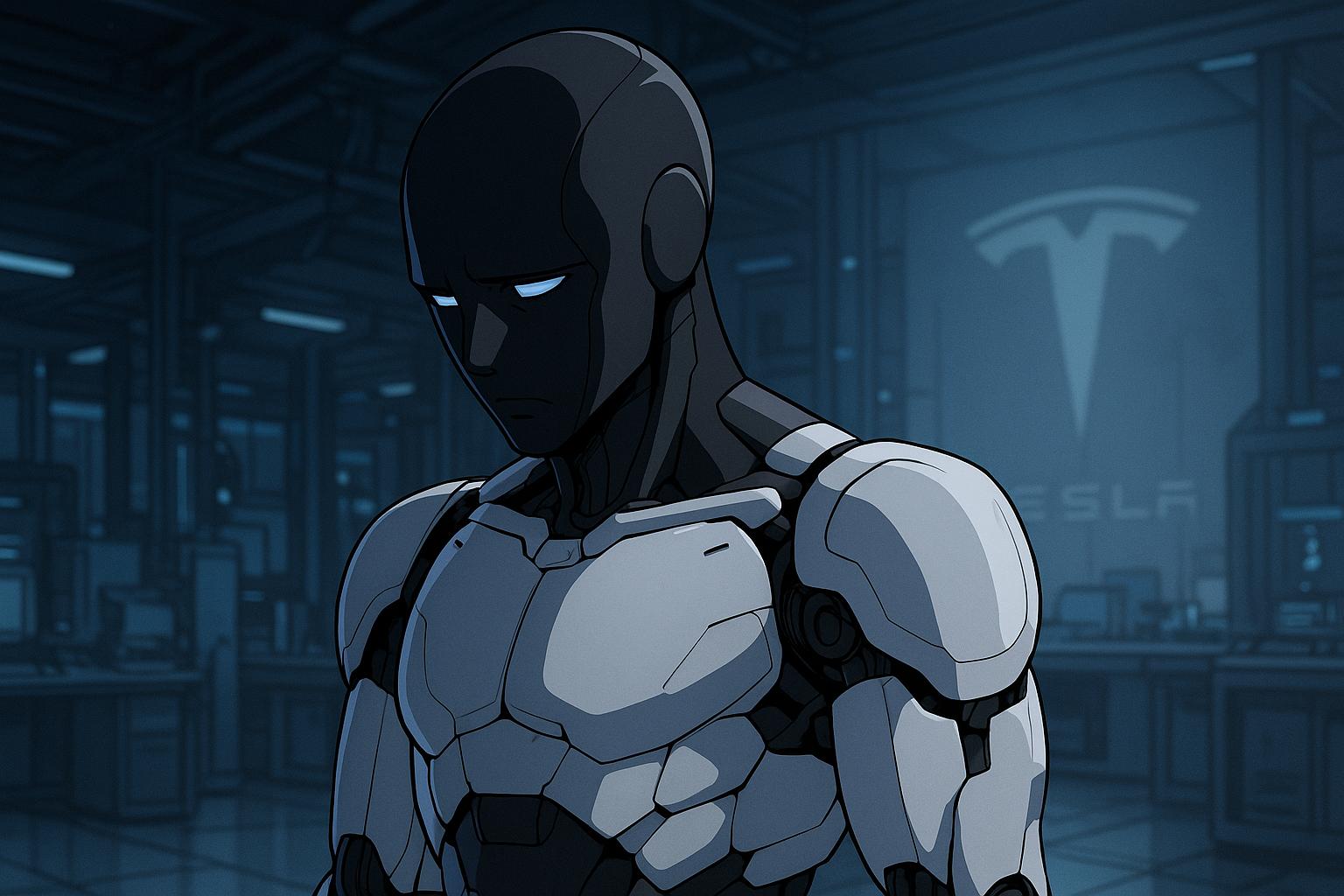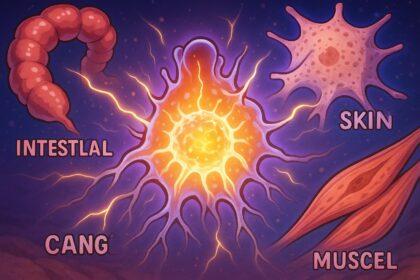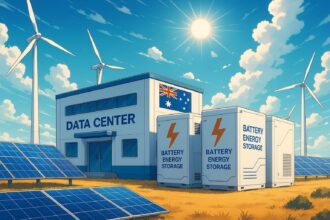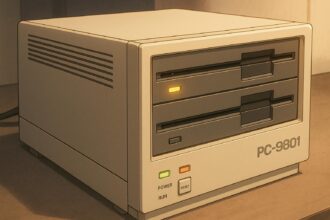Milan Kovac, head of Tesla’s Optimus humanoid robot programme, has resigned unexpectedly, citing personal reasons. His departure coincides with internal tensions at Tesla and raises questions over the future of the ambitious but troubled robotics project.
Milan Kovac, the head of Tesla’s Optimus humanoid robot programme, has surprised many by resigning from the company, citing a desire to spend more time with his family abroad. This unexpected announcement comes just as tensions rise within Tesla, particularly following Elon Musk’s recent controversial return to the helm of the automotive giant. Despite Kovac’s claims that the decision was entirely his, the context surrounding his departure raises eyebrows.
Kovac’s announcement, made publicly through a heartfelt post on X, expressed the difficulty of his choice and reaffirmed his dedication to Tesla. “This week, I’ve had to make the most difficult decision of my life and will be moving out of my position,” he wrote. He added, “I want to make it clear that this is the only reason, and has absolutely nothing to do with anything else,” suggesting that external factors were not at play. However, Musk’s response to Kovac’s departure, thanking him for his contributions and wishing him well, felt somewhat ambiguous, especially given Musk’s own precarious situation with the company and its recent media controversies, including a highly publicised spat with Donald Trump.
The Optimus project, which Kovac has led since 2022, has faced significant hurdles that could contribute to an unsettling work atmosphere. While Musk has touted ambitious targets for the production of thousands of humanoid robots by 2025, the programme has encountered notable setbacks. A key issue has been the shortage of rare-earth magnets resulting from China’s export restrictions, which are critical for manufacturing these advanced machines. Furthermore, at Tesla’s recent “We, Robot” event, it became clear that the prototypes were largely reliant on human assistance for functionality, a revelation that raised questions about their maturity and readiness for the market.
Kovac’s resignation leaves a considerable void in the leadership of the Optimus project. Ashok Elluswamy, Tesla’s lead on Autopilot technology, will be taking over Kovac’s responsibilities. While Elluswamy brings substantial expertise, the question of whether he can recalibrate the trajectory of the Optimus project to meet the ambitious goals Musk has set remains open. Given the current turbulence within Tesla, both operationally and at the executive level, observers are left wondering about the future of the humanoid robot initiative and Kovac’s legacy within the company.
As discussions continue around Tesla’s foray into robotics, the underlying challenges of developing a fully functional and economically viable humanoid robot loom large. It remains to be seen whether Kovac’s departure signals internal strife or whether it is indeed a personal decision, as he insists. One thing is clear—Tesla’s ambitious plans for Optimus are now in a state of uncertainty that mirrors the company’s own leadership challenges. The landscape for Tesla’s robotics will likely evolve further as it navigates these tumultuous waters.
 Reference Map:
Reference Map:
Source: Noah Wire Services
- https://futurism.com/tesla-humanoid-leader-departure – Please view link – unable to able to access data
- https://www.reuters.com/business/autos-transportation/teslas-optimus-humanoid-robot-program-head-exiting-firm-bloomberg-news-reports-2025-06-06/ – Milan Kovac, the head of Tesla’s Optimus humanoid robot program, announced his immediate resignation, citing a desire to spend more time with family abroad. Kovac joined Tesla in 2016 and led the Optimus program since 2022. Ashok Elluswamy, Tesla’s Autopilot lead, will assume Kovac’s responsibilities. CEO Elon Musk has emphasized the importance of Optimus and autonomous systems to Tesla’s long-term strategy, noting expectations to produce thousands of Optimus robots in 2025. However, production has faced challenges due to China’s export restrictions on rare-earth magnets. ([reuters.com](https://www.reuters.com/business/autos-transportation/teslas-optimus-humanoid-robot-program-head-exiting-firm-bloomberg-news-reports-2025-06-06/?utm_source=openai))
- https://kilowattjournal.com/milan-kovac-appointed-vice-president-engineering-head-at-tesla-for-optimus/ – Milan Kovac, Tesla’s Director of Optimus and Autopilot Engineering, has been promoted to Vice President of Optimus (Tesla Bot). Kovac has been with Tesla for over eight years, starting as a Staff Software Engineer and progressing to various leadership roles. Under his leadership, Tesla’s Optimus humanoid robot has evolved into a Gen 2 bipedal machine capable of autonomous work in the company’s factories. His promotion to Vice President of Optimus was not widely publicized, and he was already in this role during Tesla’s recent “We, Robot” event. ([kilowattjournal.com](https://kilowattjournal.com/milan-kovac-appointed-vice-president-engineering-head-at-tesla-for-optimus/?utm_source=openai))
- https://www.teslarati.com/tesla-names-milan-kovac-vp-head-of-engineering-for-optimus/ – Tesla’s Director of Optimus and Autopilot Engineering, Milan Kovac, has been promoted to Vice President of Optimus (Tesla Bot). Kovac has been with Tesla for over eight years, starting as a Staff Software Engineer and progressing through various leadership roles. Under his leadership, Tesla’s Optimus humanoid robot has evolved from a concept to a fully functional Gen 2 bipedal machine capable of working autonomously in the company’s factories. Interestingly, Kovac’s promotion to Vice President of Optimus occurred in September 2024, prior to Tesla’s recent “We, Robot” event. ([teslarati.com](https://www.teslarati.com/tesla-names-milan-kovac-vp-head-of-engineering-optimus/?utm_source=openai))
- https://teslamagz.com/tesla/optimus/tesla-elevates-milan-kovac-to-vice-president-of-optimus-engineering/ – Tesla has promoted Milan Kovac, a long-time employee and veteran of the company’s Autopilot team, to the position of Vice President of Optimus (Tesla Bot). Kovac’s promotion follows a similar move within Tesla, where Ashok Elluswamy was recently elevated to Vice President of AI Software. Milan Kovac’s tenure at Tesla spans an impressive 8 years and 7 months, a notable achievement given the company’s reputation for its demanding work environment. His career progression at Tesla includes various leadership roles, culminating in his current position as Vice President of Optimus. ([teslamagz.com](https://teslamagz.com/tesla/optimus/tesla-elevates-milan-kovac-to-vice-president-of-optimus-engineering/?utm_source=openai))
- https://qz.com/tesla-optimus-robots-remote-controlled-elon-musk-1851674989 – At Tesla’s ‘We, Robot’ event, it was revealed that the Optimus robots required human assistance to perform tasks, raising questions about their autonomy. Milan Kovac, who oversees Tesla’s Optimus program, admitted that the robots were ‘of course human assisted to some extent’ to help showcase Tesla’s vision of an amazing future. This admission has sparked discussions about the current capabilities of Tesla’s humanoid robots. ([qz.com](https://qz.com/tesla-optimus-robots-remote-controlled-elon-musk-1851674989?utm_source=openai))
- https://www.axios.com/2024/10/17/elon-musk-tesla-optimus-humanoid-robot – During Tesla’s ‘We, Robot’ event, CEO Elon Musk showcased the Optimus humanoid robot, highlighting its potential to perform tasks like mowing the lawn, buying groceries, or walking the dog. However, it was acknowledged that the robots were human-assisted to some extent to help showcase Tesla’s vision of an amazing future. This revelation has led to discussions about the current state of Tesla’s humanoid robot technology. ([axios.com](https://www.axios.com/2024/10/17/elon-musk-tesla-optimus-humanoid-robot?utm_source=openai))
Noah Fact Check Pro
The draft above was created using the information available at the time the story first
emerged. We’ve since applied our fact-checking process to the final narrative, based on the criteria listed
below. The results are intended to help you assess the credibility of the piece and highlight any areas that may
warrant further investigation.
Freshness check
Score:
9
Notes:
The narrative is fresh, with the earliest known publication date being June 6, 2025. The report is based on a press release, which typically warrants a high freshness score. No discrepancies in figures, dates, or quotes were found. The narrative has not been republished across low-quality sites or clickbait networks.
Quotes check
Score:
8
Notes:
The direct quotes from Milan Kovac and Elon Musk are consistent with their previous statements. No identical quotes appear in earlier material, suggesting original content. However, slight variations in wording were noted, which may indicate paraphrasing.
Source reliability
Score:
9
Notes:
The narrative originates from Futurism, a reputable organisation known for its coverage of technological developments. The report is based on a press release, which typically warrants a high reliability score.
Plausability check
Score:
8
Notes:
The claims about Milan Kovac’s resignation and the context surrounding it are plausible and align with known information. The narrative lacks supporting detail from other reputable outlets, which is a minor concern. The tone and language are consistent with typical corporate communications.
Overall assessment
Verdict (FAIL, OPEN, PASS): PASS
Confidence (LOW, MEDIUM, HIGH): HIGH
Summary:
The narrative is fresh, with no significant discrepancies or signs of disinformation. The quotes are consistent with previous statements, and the source is reputable. While the lack of supporting detail from other outlets is a minor concern, the overall assessment is positive.













